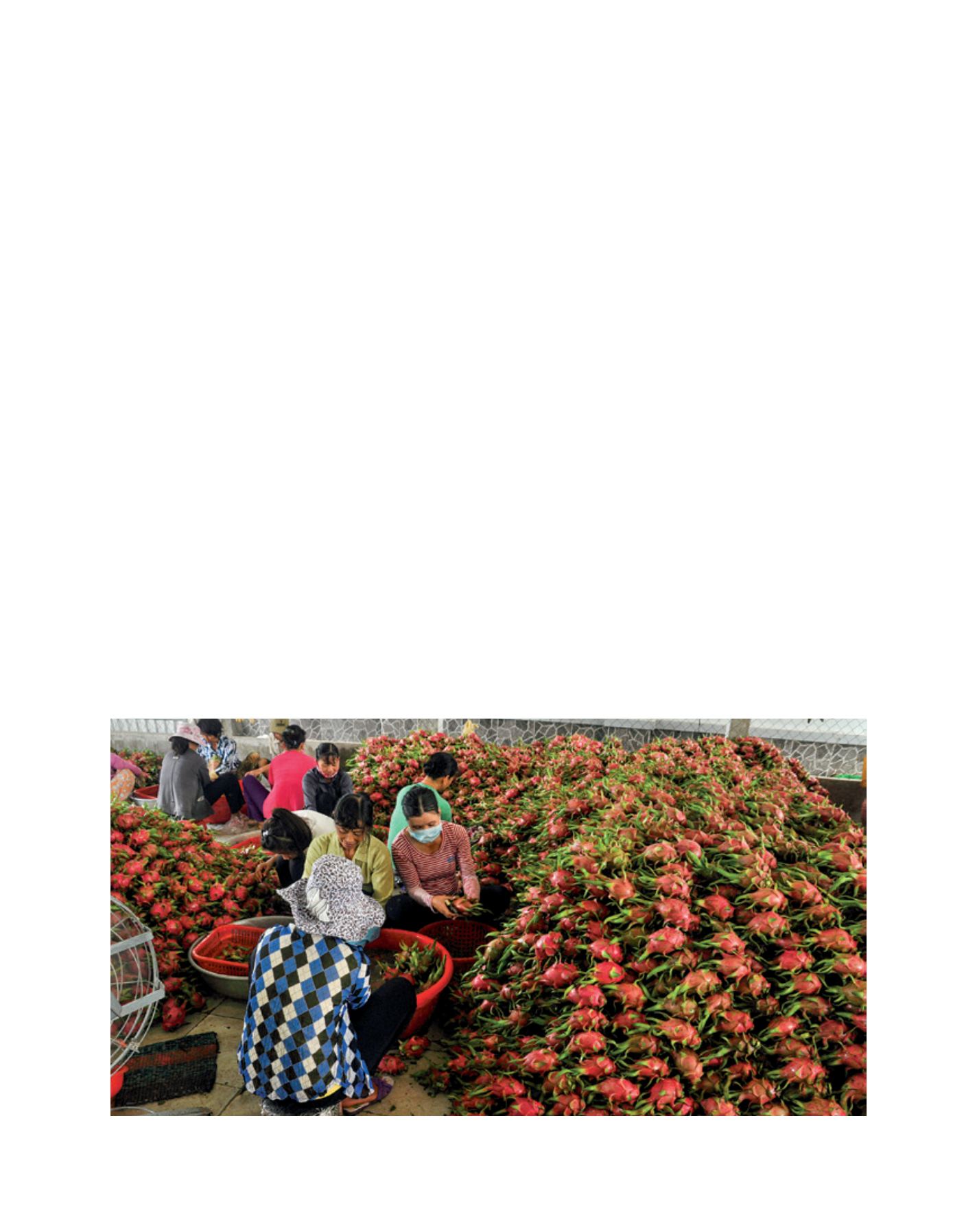

[
] 163
remains the main producer of tropical fruits, followed by Latin
America and the Caribbean, Africa, and Oceania. It is esti-
mated that 90 per cent of the fruits produced are consumed
domestically, with only an estimated 5 per cent traded as fresh
fruits and another 5 per cent processed. Ninety per cent of
tropical fruit farmers are from developing countries.
It is also common practice for tropical fruits to be part
of the mixed farming system where other food crops such
as maize, rice, root crops, and even livestock are inte-
grated with the main objective of providing food for the
family. However, the trend is changing as most farmers
now cultivate them more for increasing the family income,
therefore contributing to the local economy. Tropical fruit
cultivation covers the range of farmers from subsistence
to the more commercial, plantation-style operators, group
farmers and cooperatives.
In most tropical fruit producing countries, farmers are
now more commercial, growing more marketable fruit types
to sell, rather than just for food. Processed products such
as purees, chips and dried fruit are also being produced to
minimize wastage during seasonal glut. Processing of fruit is
commonly organized by the women in the farm community.
Even though the outlook for tropical fruit seems bright with
an expected gradual increase in demand, there are challenges
which affect farm families.
One of the biggest challenges is that the seasonal nature
of some topical fruit types such as mango, mangosteen and
rambutan adds to the problem of wastage and low prices
during the glut season. At times of low prices, the fruits are
sometimes left unharvested.
Post-harvest is another major challenge for tropical fruit
farmers. Losses occur from the harvesting stage up to packing
and distribution. Causes include inappropriate and repeated
handling along the chain during reselection, grading and
repacking. Generally, post-harvest losses in developing coun-
tries for tropical fruits have been estimated to be about 30 per
cent. This situation is worsened with poor infrastructure and
logistic to transport the produce to the market.
Farmers are sometimes unable to access appropriate
production technologies such as suitable cultivars, suitable
cultural techniques, off-season production techniques and
good agricultural practices. An efficient extension system
is also imperative in order to impart these latest production
technologies to farmers.
As an indirect effect of climate change, pests and disease
outbreaks have seriously affected production and income
for tropical fruit growers. While some diseases and pests
can be contained some, like the banana wilt and citrus
greening disease, continue to devastate farms, affecting the
farmers’ income and prompting changes in the choice of
crops or other agricultural activities.
There is also lack of farmers’ integration into the value
chain and access to the market. The main players in the
value chain are the farm collectors, traders, processors,
wholesalers, distributors and retailers. Tropical fruit
farmers are involved in the production end of the chain
and are seldom aware of what happens to their produce
once it is sold. It is quite common for farmers to be paid
prices that are three times lower for their products because
of the intermediaries in the market chain. Efforts to enable
the farmers to play a more active role in the chain should be
encouraged. This includes partnerships or contract agree-
ments with other chain players such as retailers and the
provision of credit facilities.
With increasing demand and changing consumer trends
for safe and quality fruits plus certification, farmers have
Growing demand promises an optimistic future for the tropical fruit industry, including family farms
Image: International Tropical Fruits Network
D
eep
R
oots
















